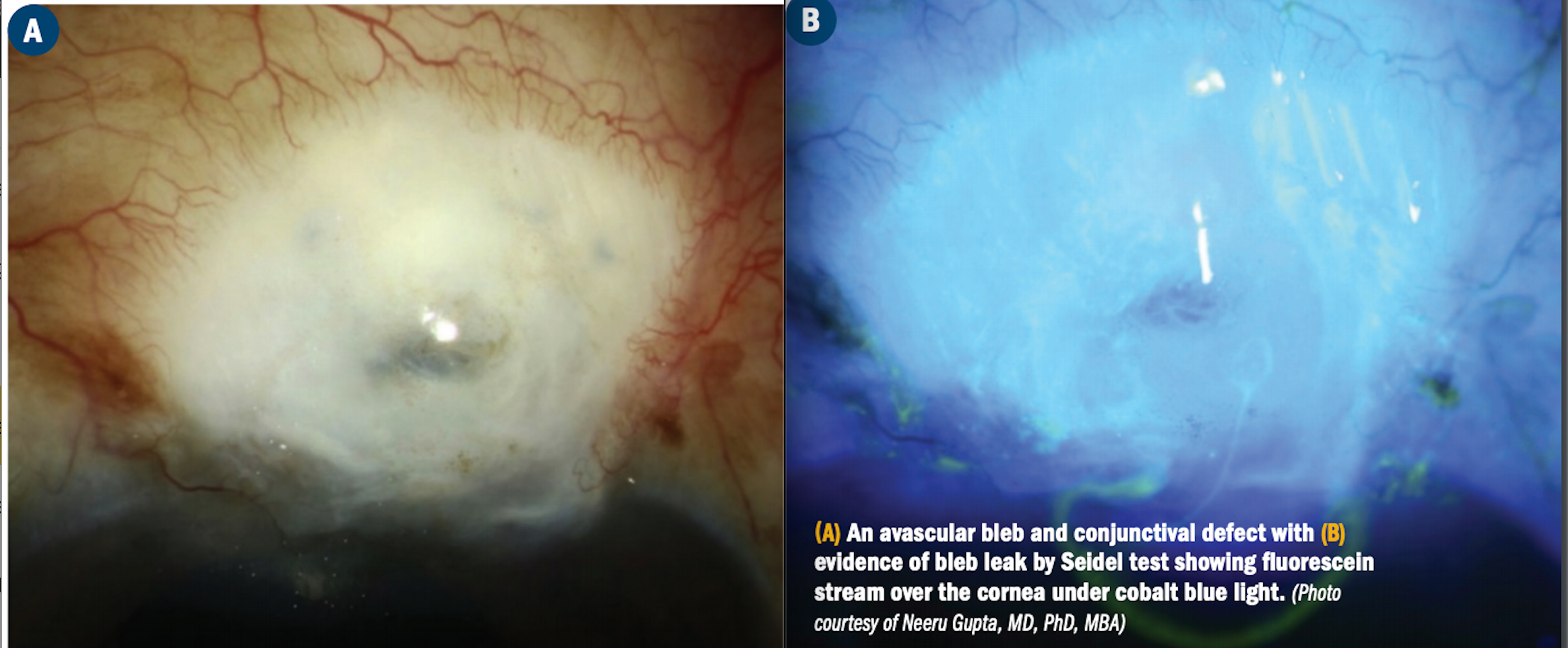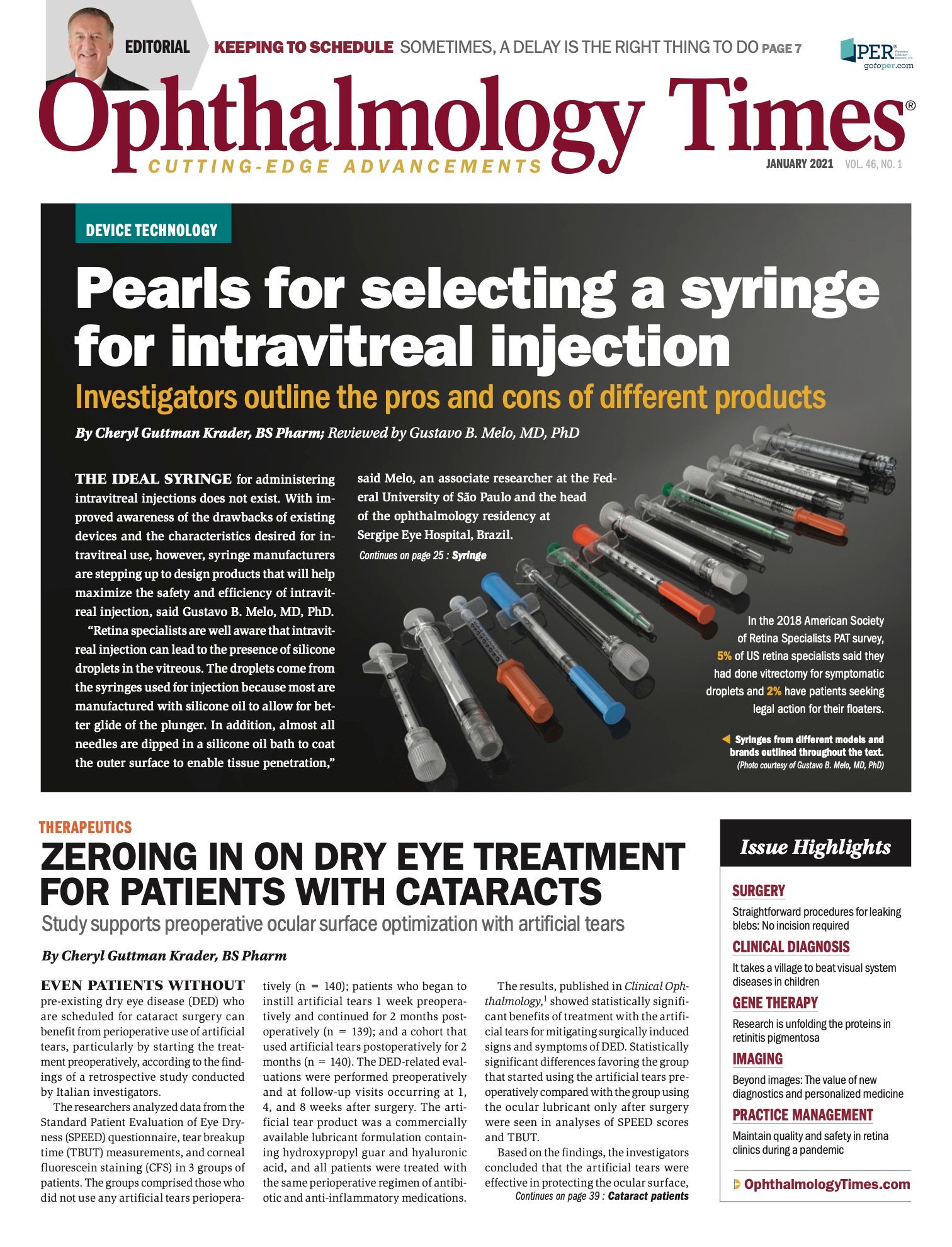Publication
Article
Digital Edition
Straightforward procedures for leaking blebs: No incision required
Author(s):
Minimally invasive conjunctival surgery option is an efficient procedure.


This article was reviewed by Neeru Gupta, MD, PhD, MBA
The first attempts at bleb repair after trabeculectomy and introduction of the use of mitomycin C (MMC) to improve surgical success rates resulted in blebs that were avascular and prone to leaks.
“This scenario is a time bomb because, left unchecked, it can lead to blebitis and possibly endophthalmitis, and myriad other problems, such as hypotony with associated anatomic disruptions such as vision-blurring corneal striae, shallow anterior chambers, buildup of excess fluid leading to dome-shaped choroidals, and hypotony maculopathy,” said Neeru Gupta, MD, PhD, MBA.
Related: Bleb leaks treated with minimally invasive conjunctival surgery
Gupta is a professor of ophthalmology and chief of glaucoma at the University of Toronto, and president-elect of the World Glaucoma Association.
Techniques that have attempted to address the problem of leaky blebs include conservative treatment with antibiotics, aqueous suppressants, steroids, collagen shield, bandage contact lens, pressure patch, cyanoacrylate tissue glue, autologous blood, and argon laser or Nd:YAG laser. The microsurgical approaches include bleb resuturing, and bleb excision and conjunctival advancement with or without various grafting techniques.
Despite all this, no procedure stands out as effective.
“Despite the number of attempted procedures, we continue to struggle with managing bleb leaks,” Gupta said.
Related: Bleb leaks and infections require vigilance
Novel bleb leak management
Gupta developed the minimally invasive conjunctival surgery incision-free procedure to address late-onset bleb leaks close to the limbus.
For a patient with a history of high myopia, advanced pigmentary glaucoma, retinal detachment treated with pars plana vitrectomy and later with pneumatic retinopexy and cryotherapy, use of multiple glaucoma medications for advanced glaucoma, thin corneas, bilateral cataracts, and remaining central islands of vision of 20/60 to 20/70, Gupta performed bilateral trabeculectomies with MMC. Vision was stable with intraocular pressures (IOPs) of 8 to 10 mm Hg bilaterally.
In 2012, however, the vision in the left eye decreased to 20/100 with an IOP of 2 mm Hg and an avascular leaking bleb. Three days later, the vision was 20/200 with an IOP of 0 mm Hg.
Related: Physicians share surgical pearls for successful trabeculectomy
In surgery, Gupta acted to address this situation without undoing the previous treatments. Instead of excising the bleb and covering the area with conjunctiva, she injected subconjunctival lidocaine above the bleb. She described the conjunctival epithelium as highly voluminous and able to move freely.
With gentle tugging, and without disturbing Tenon capsule, she pulled a sizable area of the conjunctival tissue to the limbus over the leaking area and put in a series of stitches (typically 3 to 4) without using a great deal of pressure that resulted in a sealed wound.
“This was a short, incision-free procedure,” she said of this first such case.
The patient has done well during the ensuing 8 years. Gupta reported that she has performed this procedure in 14 cases and reported the results in the American Journal of Ophthalmology.1
In all cases, the patients have remained stable and medication free from 2 weeks to 5 years later. She said that with time the transposed conjunctival tissue becomes translucent and seems to take on the characteristics of the early bleb that was leaking.
Gupta enumerated the surgical benefits of this procedure.
Related: Success of SLT after trabecular bypass stenting / phaco
“It is short and incision free with good success; the bleb is preserved; the procedure is relatively simple, inexpensive, efficient, and accessible; and the patients are comfortable postoperatively and can return to normal activities,” she said. “They leave after the surgery with an antibiotic and a steroid.
She advised that studies are needed to determine the long-term outcomes.
Read more by Lynda Charters
--
Neeru Gupta, MD, PhD, MBA
e:guptan@smh.ca
Gupta has no financial interest in this subject matter.
--
Reference
1. Gupta N. Incision-free minimally invasive conjunctival surgery (MICS) for late-onset bleb leaks after trabeculectomy (an American Ophthalmological Society thesis). Am. J. Ophthalmol. 2019;207:333-342. doi:10.1016/j.ajo.2019.04.031

Newsletter
Don’t miss out—get Ophthalmology Times updates on the latest clinical advancements and expert interviews, straight to your inbox.





